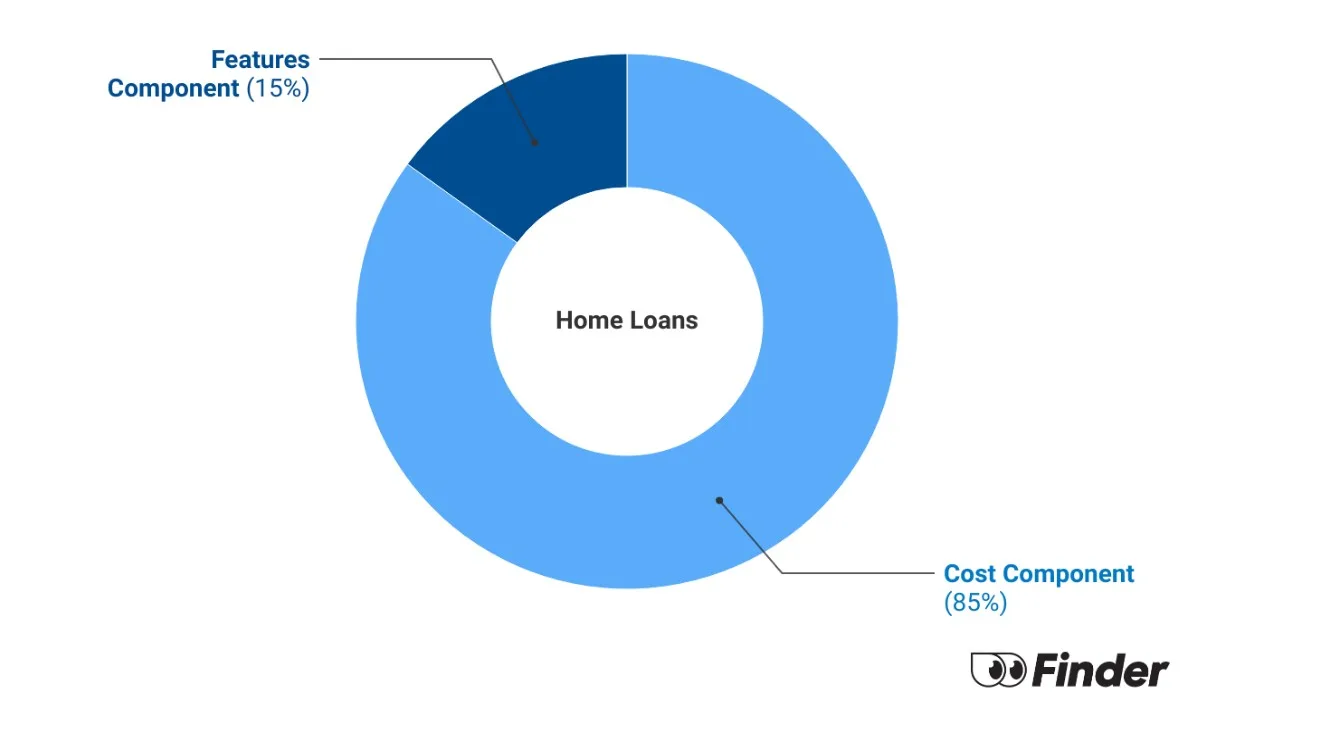Compare other products
We currently don't have that product, but here are others to consider:
How we picked theseKey takeaways
- Most home loans have a few fees. Lenders charge fees to cover the costs of processing applications, valuing a property or paying a conveyancer to handle settlement.
- Some lenders charge a monthly fee for maintaining the loan account, especially if the loan has a 100% offset account.
- But many lenders now charge minimal fees, and some genuinely charge no fees at all.
How much can you save with no ongoing fees?
If a home loan has an upfront application fee, it will probably cost you $400–$600. But a home loan with an ongoing monthly or annual fee could cost you thousands over the life of a loan.
Here's a simple example.
Ongoing fee versus no ongoing fee
Let's compare 2 mortgages.
- Loan 1. A basic home loan with an interest rate of 6.00% p.a. and a $400 application fee.
- Loan 2. A package home loan with the same 6.00% interest rate. It has no application fee but does have a $250 annual fee.
| Loan 1 | Loan 2 | |
|---|---|---|
| Interest rate | 6.00% p.a. | 6.00% p.a. |
| Loan term | 30 years | 30 years |
| Set-up fees | $400 | $0 |
| Ongoing fees (p.a.) | $0 | $250 |
| Total cost of fees over 30 years | $400 | $7,500 |
In the end, the annual fee ends up being much more expensive over 30 years. Of course, a package home loan comes with other benefits, such as a credit card and offset account. So the fee may be worth it, depending on your needs.
How to compare home loans with no ongoing fees
- Look at all the loan fees. A lender might waive monthly or annual fees but still charge fees for offset or redraw facilities, which might add to the cost of your loan.
- Look at the interest rate. The interest rate has a much bigger impact on your loan costs than fees. A lower rate means lower interest charges. Compare the interest rate against other, similar loans to make sure you're getting a good deal.
- Look at the loan's features. Paying less in fees is good. But you should consider other features that come with the loan. Using a home loan's offset account could help you save a lot in interest charges, outweighing the cost of fees. A loan that allows for additional repayments could help you get out of debt sooner.
A no-fee home loan can save you money, but...
What other home loan fees do lenders charge?
Aside from monthly service fees and application fees, lenders often charge:
- Valuation fees. Lenders often get a professional valuation of your property before approving your loan.
- Legal fees. Lenders often charge a fee to cover their legal costs during loan settlement.
- Discharge fees. Some lenders charge you a fee when you end the loan contract.
- Break costs. This fee only applies if you exit a fixed rate loan before the fixed period ends. Break fees can cost hundreds or thousands of dollars and depend on various factors including your loan size, how much is left on your fixed period and current variable rates.
Learn more about different mortgage fees
Other fees
While your lender won't charge these fees, there are other costs you'll pay when you settle the mortgage, such as your conveyancer's fee and a mortgage registration fee that your state or territory government charges.

"The perfect situation for most clients is to not pay the bank fees for your home loans, but this is not always the best way to do it. And the fees may be beneficial to your overall loan costs. Loans with offset accounts are more likely charge fees. But the benefits you get from the offset account may far outweigh this fee."
Do all home loans have fees?
There are actually some home loans in Finder's database that have no fees at all.
Lenders that charge no fees
- Unloan. This online lender charges no fees at all.
- Up. A mobile-only lender (you have to use the Up app), Up has no fees on its home loans.
- Athena. This online lender does not charge any fees.
There are many other lenders that have close to zero fees. Online lender Tiimely Home, for example, has a discharge fee when you end the home loan and a small monthly fee if you add an offset account.
Frequently asked questions
What is Finder Score?
The Finder Score crunches 7,000 home loans across 120+ lenders. It takes into account the product's interest rate, fees and features, as well as the type of loan eg investor, variable, fixed rate - this gives you a simple score out of 10.
To provide a Score, we compare like-for-like loans. So if you're comparing the best home loans for cashback, you can see how each home loan stacks up against other home loans with the same borrower type, rate type and repayment type. We also take into consideration the amount of cashback offered when calculating the Score so you can tell if it's really worth it.
Sources
Ask a question
More guides on Finder
-
Calculate the income needed to buy a home in any suburb in Australia
Work out how much you need to earn to buy a house in any Australian suburb.
-
Current home loan interest rates in Australia
We compile the average home loan interest rates in the market and update them monthly.
-
Compare bank interest rates in December 2025
Compare current bank interest rates for home loans, credit cards, personal loans, savings accounts and term deposits to find the best deal for you.
-
Low deposit home loans
You may be able to get a low deposit home loan with just a 5% cash deposit. Here are the lenders who are more likely to lend you a 95% loan.
-
Investment home loan rates
The best investor home loan rates that have been offered in years have hit the market. Compare investment property loan rates today.
-
Compare construction loan rates
Construction loan comparison is as simple as finding out how much you can borrow, then reviewing some of the best construction loans on the market to find the right fit.
-
Cheap Home Loans Australia
Find the cheapest home loan rates and learn how to decide which one best fits your needs and will save you the most money.
-
Best variable home loan rates
Find a great deal on a variable interest rate home loan from lenders large and small. Start comparing and saving today.
-
Best Home Loan Rates Australia
Learn how to compare rates to find the best home loan and start saving money on your mortgage today.
-
Best home loans with offset accounts
What is an offset account? It can save you thousands in interest and help you own your home sooner.


